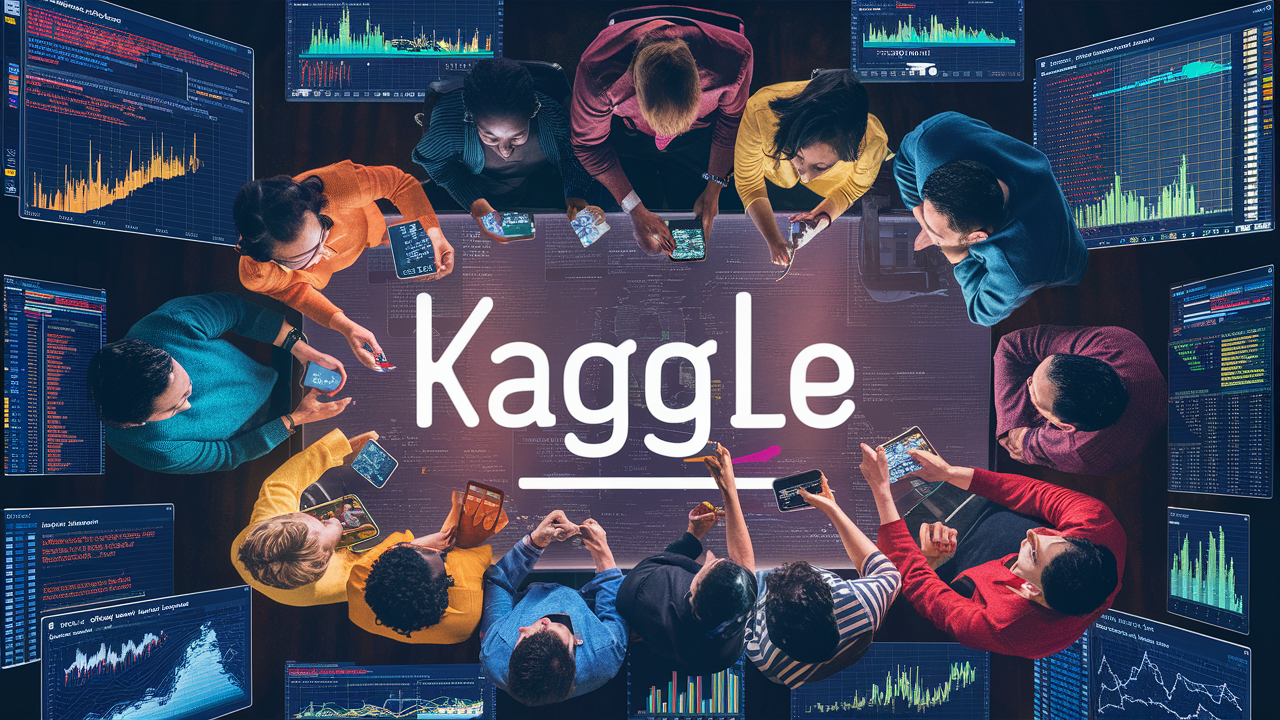Introduction:
Are you ready to supercharge your data science journey? Kaggle datasets are your ticket to unlocking powerful insights, building cutting-edge models, and standing out in the world of data. Whether you’re a beginner dipping your toes into machine learning or a seasoned pro hunting for high-quality data, Kaggle datasets offer an unparalleled resource. In this comprehensive guide, we’ll dive deep into what makes Kaggle datasets a game-changer, how to use them effectively, and why they’re the secret weapon for data science success. Let’s embark on this exciting adventure!
What Are Kaggle Datasets?
Kaggle datasets are curated collections of data hosted on Kaggle, the world’s leading platform for data science and machine learning. These datasets cover every imaginable topic—from healthcare and finance to social media trends and environmental studies. Created by individuals, organizations, and companies, Kaggle datasets are freely accessible, making them a goldmine for anyone looking to practice, experiment, or solve real-world problems.
Why are Kaggle datasets so special? They’re clean, diverse, and often come with detailed descriptions, making it easy to understand the data’s context. Plus, Kaggle’s community ensures datasets are high-quality, with user ratings and comments to guide you. Whether you’re analyzing global climate patterns or predicting house prices, Kaggle datasets have something for everyone.
Why Kaggle Datasets Are a Must for Data Scientists
The power of Kaggle datasets lies in their versatility and accessibility. Here’s why they’re a must-have in your data science toolkit:
- Diverse Topics: Kaggle datasets span industries like healthcare, retail, sports, and more. You can explore datasets on COVID-19 trends, Netflix movie ratings, or even Pokémon statistics. This variety lets you work on projects that spark your interest.
- High-Quality Data: Most Kaggle datasets are well-structured, with missing values flagged and formats like CSV or JSON for easy use. Many include metadata, so you know exactly what you’re working with.
- Free and Accessible: Unlike paid data sources, Kaggle datasets are free to download, leveling the playing field for students, hobbyists, and professionals.
- Community Support: Kaggle’s vibrant community shares notebooks, tutorials, and insights alongside datasets. You’re never alone when working with Kaggle datasets.
- Real-World Applications: Many Kaggle datasets come from real-world problems, giving you hands-on experience with data that mirrors industry challenges.
By leveraging Kaggle datasets, you can build a portfolio, compete in Kaggle competitions, or even publish research—all while honing your skills.
How to Find the Perfect Kaggle Datasets
With thousands of Kaggle datasets available, finding the right one can feel overwhelming. Here’s a step-by-step guide to discover datasets that align with your goals:
Step 1: Define Your Objective
Before browsing Kaggle datasets, clarify what you want to achieve. Are you practicing regression models? Exploring natural language processing? Or maybe you’re curious about a specific industry like e-commerce? A clear goal helps narrow your search.
Step 2: Use Kaggle’s Search and Filters
Kaggle’s dataset page has a powerful search bar. Type keywords related to your project, like “healthcare” or “machine learning.” Use filters like:
- File Types: Choose CSV, JSON, or SQLite based on your tools.
- Usability Rating: Look for datasets with high usability scores (7.0+) for cleaner data.
- License: Ensure the dataset’s license fits your project (e.g., open-source for commercial use).
- Size: Pick smaller datasets (under 100 MB) for quick experiments or larger ones for complex models.
Step 3: Check Community Feedback
Each Kaggle dataset page includes user comments, notebooks, and discussions. Skim these to see how others have used the dataset and any challenges they faced. This saves time and helps you avoid problematic datasets.
Step 4: Explore Trending and Featured Datasets
Kaggle highlights trending and featured Kaggle datasets on its homepage. These are often high-quality, popular datasets used in competitions or by top data scientists. They’re a great starting point for inspiration.
By following these steps, you’ll find Kaggle datasets that are perfect for your next project, whether it’s a simple visualization or a deep learning masterpiece.
How to Use Kaggle Datasets Effectively
Once you’ve chosen a dataset, it’s time to roll up your sleeves. Here’s how to make the most of Kaggle datasets:
1. Understand the Data
Start by reading the dataset’s description and metadata. For example, a Kaggle dataset on wine quality might include columns for acidity, sugar, and ratings. Knowing what each column represents is crucial for analysis. Check for:
- Data types (numerical, categorical, text).
- Missing values or outliers.
- Time periods or geographic scope.
2. Clean and Preprocess
Even the best Kaggle datasets may need cleaning. Use Python libraries like Pandas or R to handle missing values, remove duplicates, or normalize data. For instance, if you’re working with a Kaggle dataset on customer reviews, you might remove irrelevant columns or convert text to lowercase for NLP tasks.
3. Visualize and Explore
Exploratory data analysis (EDA) is your friend. Use tools like Matplotlib, Seaborn, or Tableau to create charts and uncover patterns. For a Kaggle dataset on global temperatures, you might plot trends over decades to spot climate changes. Share your visualizations in Kaggle notebooks to get feedback.
4. Build Models
Kaggle datasets are perfect for testing machine learning models. Depending on the dataset, you can try:
- Regression: Predict house prices using a Kaggle dataset on real estate.
- Classification: Detect spam emails with a Kaggle dataset on email texts.
- Clustering: Group customers using a Kaggle dataset on shopping habits.
Start simple with algorithms like linear regression or decision trees, then experiment with advanced models like XGBoost or neural networks.
5. Share and Learn
Upload your analysis as a Kaggle notebook to showcase your work. Engage with the community by commenting on others’ notebooks or joining discussions. This feedback loop sharpens your skills and builds your reputation.
By treating Kaggle datasets as a playground for experimentation, you’ll gain hands-on experience that employers and collaborators value.
Top Kaggle Datasets to Kickstart Your Journey
Need inspiration? Here are five popular Kaggle datasets to explore in 2025, each with unique learning opportunities:
- Titanic: Machine Learning from Disaster
This classic Kaggle dataset includes passenger data (age, class, survival status) to predict who survived the Titanic. Perfect for beginners learning classification. - House Prices: Advanced Regression Techniques
A Kaggle dataset with 79 features like square footage and neighborhood to predict home prices. Ideal for practicing regression and feature engineering. - COVID-19 Open Research Dataset (CORD-19)
This Kaggle dataset contains thousands of research papers on COVID-19. Great for NLP tasks like sentiment analysis or topic modeling. - Google Smartphone Decimeter Challenge
A Kaggle dataset with GPS and sensor data to improve location accuracy. Suited for advanced users interested in geospatial analysis. - IMDb Movie Reviews
This Kaggle dataset includes movie reviews labeled as positive or negative. Excellent for sentiment analysis and text processing.
These Kaggle datasets are just the tip of the iceberg. Browse Kaggle’s dataset library to find hidden gems that match your interests.
Tips for Success with Kaggle Datasets
To maximize your experience with Kaggle datasets, keep these tips in mind:
- Start Small: Beginners should choose smaller Kaggle datasets (under 10 MB) to avoid overwhelm.
- Document Your Work: Write clear comments in your code and explain your thought process in notebooks.
- Experiment: Try different algorithms or visualizations with the same Kaggle dataset to deepen your understanding.
- Stay Ethical: Respect dataset licenses and avoid sharing sensitive data outside Kaggle.
- Join Competitions: Many Kaggle datasets are tied to competitions with cash prizes and leaderboards. Participating boosts your skills and visibility.
The Future of Kaggle Datasets
As data science grows, Kaggle datasets will remain a cornerstone for learning and innovation. Kaggle continues to add new datasets, integrate with cloud tools like Google Colab, and foster a global community. In 2025, expect more Kaggle datasets focused on emerging fields like quantum computing, AI ethics, and climate tech. By staying active on Kaggle, you’ll be at the forefront of these trends.
Final Thoughts:
Kaggle datasets are more than just files—they’re your gateway to mastering data science, solving real-world problems, and building a standout portfolio. From exploring diverse topics to collaborating with a global community, Kaggle datasets empower you to learn, create, and succeed. So, what are you waiting for? Dive into Kaggle, pick a dataset, and start your journey today!
Have you used Kaggle datasets before? Share your favorite dataset or project in the comments—I’d love to hear your story!




